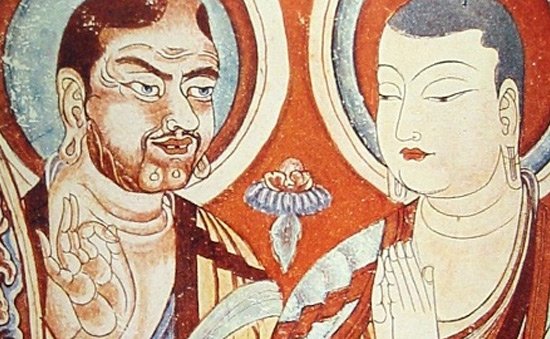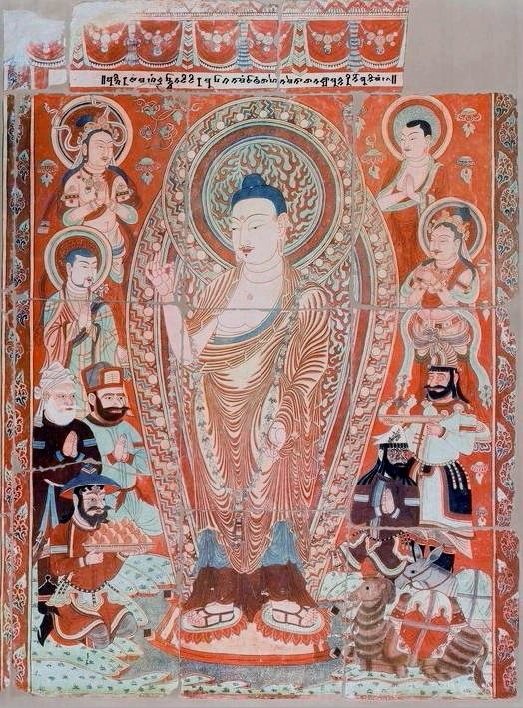Indian Scholars to China
We have all heard about Fa-Hien and Xuanzang, who came to india and wrote memorable accounts of their expeditions.
However, very few people know that between 100 AD to 11th century AD, there was an influx of Indian scholars who visited China.
We have all heard about Fa-Hien and Xuanzang, who came to india and wrote memorable accounts of their expeditions.
However, very few people know that between 100 AD to 11th century AD, there was an influx of Indian scholars who visited China.

The names of these scholars are as under:
1st Century AD
1) Kāsyapa Mātanga & Dharmaratna
From 100 - 500 AD
1) Samghavarman;
2) Dharmakala;
3) Kālaruchi;
4) Dharmapala;
5) Vighna;
6) Mahābala;
7) Lokaraksha
1st Century AD
1) Kāsyapa Mātanga & Dharmaratna
From 100 - 500 AD
1) Samghavarman;
2) Dharmakala;
3) Kālaruchi;
4) Dharmapala;
5) Vighna;
6) Mahābala;
7) Lokaraksha

Between 500-600 AD
1) Dharmavena;
2) Buddhasānta;
3) Gautama;
4) Upasūnya;
5) Vimokshena
From 600- 11th century AD
1) Prabhakarmitra: Went to China in 627 AD, translated some Buddhist works, died in 633 AD.
1) Dharmavena;
2) Buddhasānta;
3) Gautama;
4) Upasūnya;
5) Vimokshena
From 600- 11th century AD
1) Prabhakarmitra: Went to China in 627 AD, translated some Buddhist works, died in 633 AD.

2) Atigupta ( o-ti-khu-to), from central India. He came to China in 652 AD & wrote 'Dharini-Samagrala-Sūtra'.
3) Divaraka: A monk from central India who translated 19 Buddhist works into Chinese;
3) Divaraka: A monk from central India who translated 19 Buddhist works into Chinese;

4) Ratnachinta from Kashmir, who went to China nad translated seven Buddhist works from 693 AD to 706 AD;
5) Subhakara Simha from Nālandā, who went in 716 AD and died in 733 AD;
6) Dānāpala, hailed from Udayāna & translated 111 Buddhist works into Chinese
5) Subhakara Simha from Nālandā, who went in 716 AD and died in 733 AD;
6) Dānāpala, hailed from Udayāna & translated 111 Buddhist works into Chinese

The visit of few more Indian scholars in the 11th century brings to close a glorious chapter of Indian history recording how the cultural contacts between India & China had continued for well over 1,000 years and established Buddhism in China. 

The political disturbances following the Muslim invasion of India, along with the destruction of Indian centres of learning by the invading armies, interfered with these peaceful movements of scholars between India and China.
End
End

P. S: Two Indian scholars visited China in 980 AD. Their Chinese names are : ' Tien-si-tsai' & ' Che-hou'.
The former is stated to be from Kashmir or a native of Jalandhar ( jo-lan-to-lo).
In 20 years, he translated 18 works & served with Dānapāla on the Board of Translaters
The former is stated to be from Kashmir or a native of Jalandhar ( jo-lan-to-lo).
In 20 years, he translated 18 works & served with Dānapāla on the Board of Translaters
@threadreaderapp , compile
• • •
Missing some Tweet in this thread? You can try to
force a refresh
















